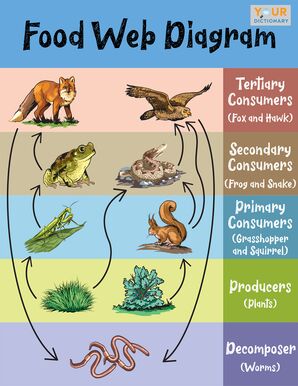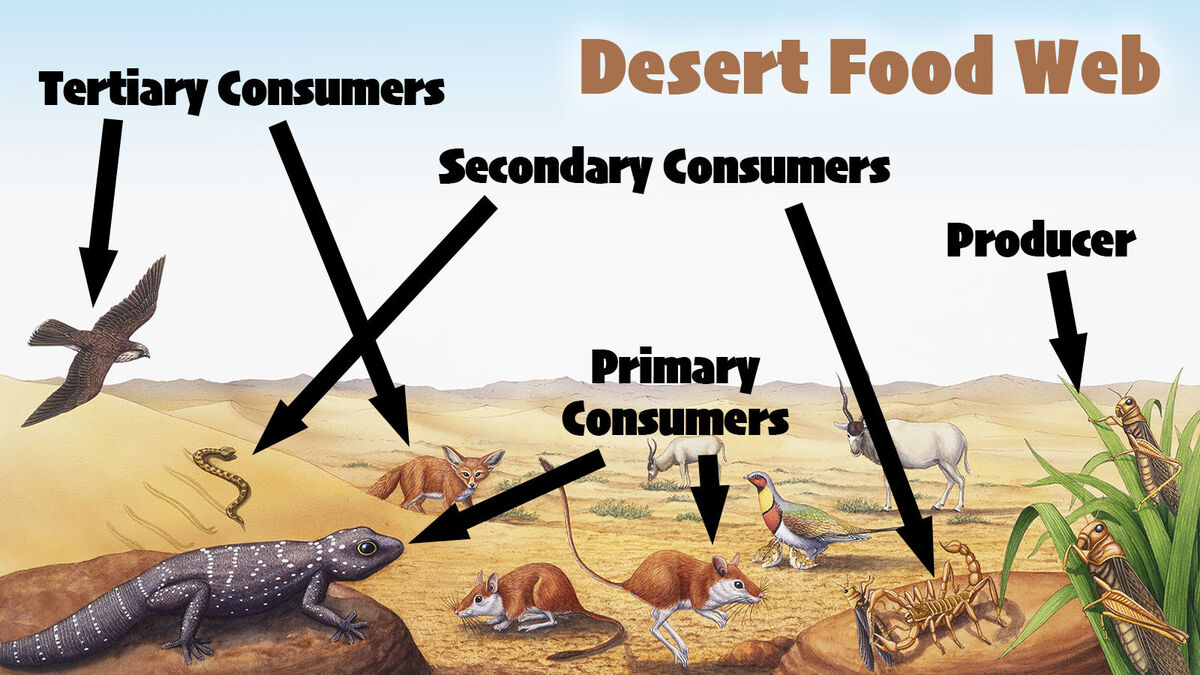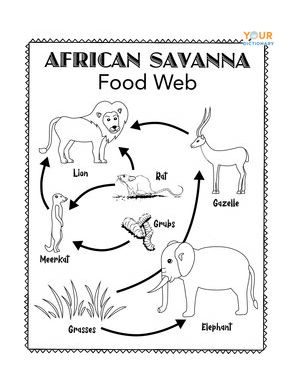

Have you ever wondered about the difference between a food chain and a food web? While a food chain follows a singular link, a food web shows how diverse and interconnected an ecosystem's food sources can be. Explore what a food web is in science through a food web diagram. You'll also get vocabulary words and a fun coloring printable to expand your food web thinking.
What Is a Food Web in Science?
Do you like to eat just one food? Well, animals don't either. They like to eat all different types of plants and animals, depending on whether they are a herbivore, omnivore or carnivore.
For example, a red fox likes to eat rabbits and birds. A thrush, which is a type of bird, like to eat both worms and snails. To illustrate the different foods animals like, a food web shows several of the different food chains in a habitat and how they work together. To really understand a food web, you need to look at a food chain first.
Food Web vs. Food Chain
A food chain shows you how one organism eats another and transfers its energy. For example, a zebra eats grass, and the zebra is eaten by the lion. The food chain looks like this:
- Grass - Zebra - Lion
Food chains are a simple look at how sunlight is made into energy by plants through photosynthesis, then how that energy is transferred from animal to animal after eating the plants.
Food webs look at how multiple food chains interact with each other. Since most animals or plants might be part of several different food chains, they can create a food web that is made up of lots of producers, consumers and decomposers.
Food Web Diagram Example
To see how a food web works, it can be easiest to look at an example.
For instance, plants are eaten by grasshoppers and squirrels. The grasshopper is eaten by the lizard, which is then eaten by the fox. The squirrel can be eaten by a fox or a golden eagle. The squirrel can also be eaten by a snake, which is then eaten by the fox. When the fox or eagle die, they are decomposed by earthworms and bacteria.
See how it can get confusing? Looking at a food web diagram can really clear things up.


Trophic Levels
Each level in a food web is a trophic level. This means that energy is transferred from one organism to another, or from one trophic level to another. At the beginning of the food web are the producers or autotrophs. The producers are then eaten by the consumers or heterotrophs, which include primary, secondary, and tertiary consumers, plus the decomposers.
Examples of Food Webs
Food webs exist in a variety of biomes. Because each habitat is unique, each food web is slightly different. Explore different plants, animals and decomposers that can be found in deserts, savannas, forests and marine environments.
Desert
A desert is a habitat with little water. Deserts aren't all hot either. Some deserts are very cold. In the desert food web, you'll find:
- Producers: Cacti, bushes, acacias, flowers, brush
- Primary Consumers: Insects, lizards, rodents
- Secondary Consumers: Tarantulas, scorpions, lizards, snakes
- Tertiary Consumers: Hawks, foxes
In a food web, cacti are eaten by insects, lizards or rodents. The insects can be eaten by the tarantulas, scorpions and lizards. The lizards are then hunted by snakes, foxes and hawks. Everyone likes a little variety in their diet.
Forest
Forests have lots of trees and other plants. They are dense with lots of different vegetation for animals to enjoy. Check out the different players in a desert food web.
- Producers: Plants, fruits, nuts, seeds, flowers
- Primary Consumers: Deer, squirrels, frogs, birds, pikas
- Secondary Consumers: Pine marten, jackrabbits, ravens, ringtails
- Tertiary Consumers: Bobcats, mountain lions, coyotes
An example of a forest food web includes plants and fruit eaten by a mule deer. The mule deer can then be eaten by a lion or bobcat. Another food web example is the pika eating the plants. The pika is consumed by the ringtail or raven. The ringtail is then eaten by the coyote, mountain lion or bobcat.
Savanna
A savanna biome has a lot of grass for animals to graze on. These habitats are found in Africa, Australia and even South America. You might see zoo animals like zebras and lions. Find out who will be in a savanna food web.
- Producers: Star grass, oat grass and acacia
- Primary Consumers: Grasshoppers, ants, termites, warthogs, gazelle, impala, mice, wildebeest
- Secondary Consumers: Pangolins, aardvarks, mongooses
- Tertiary Consumers: Wild dogs, lions, cheetahs, caracals, servals, eagles
The savanna food web might start with a warthog eating star grass. The warthog can then be caught and eaten by the lion or wild dog. Another example would be of a termite eating the red oat grass. That termite might then be eaten by the mongoose or the serval. But the mongoose can be eaten by the caracal, too.
Marine
Underwater creatures like variety too. In a marine environment, examples that you will find in the food web include:
- Producers and Decomposers: Seagrass, seaweed, algae, plankton, bacteria
- Primary Consumers: Turtles, damselfish, crab, shrimp
- Secondary Consumers: Octopuses, triggerfish, squid, krill
- Tertiary Consumers: Seagulls, penguins, elephant seals, whales
If you were to watch the food web happen underwater, you would see krill eat plankton. The krill would then be eaten by fish or a whale. That fish might be eaten by a seagull or a seal.
Food Web Coloring Page
Try your hand at understanding a food web through a fun coloring page. Simply print and color.

Coloring page food web
Click to View & DownloadFood Web Vocabulary
Food webs have many different moving parts that are all important to maintaining a stable ecosystem. Explore these vocabulary words to further your knowledge of food webs.
- Producers (autotrophs) - make their own food
- Consumers - omnivores, carnivores and herbivores that eat other plants and animals
- Decomposers - insects and bacteria that break down organisms
- Herbivores - animals that only eat plants
- Carnivores - animals that eat other animals
- Omnivores - animals that eat both plants and animals
- Trophic Level - the position of an organism on the food chain (producer, consumer, decomposer)
- Primary Consumers - the organisms that eat the plants
- Secondary Consumers - the animals that eat the primary consumers
- Tertiary Consumers - the animals that can eat both primary and secondary consumers
Animals and Energy
When it comes to energy, everyone has to eat. Since animals like variety, you'll find that food sources don't just happen in a single chain. Even the top consumers become food for something in the end! Learn more about decomposers by exploring examples of zygomycetes.